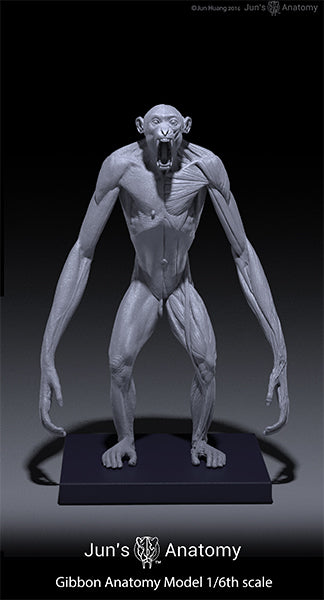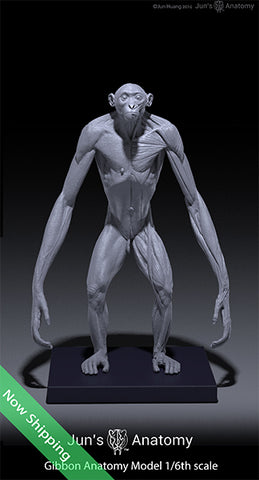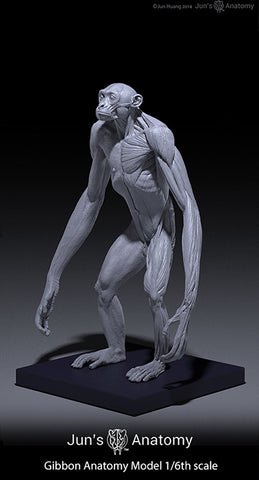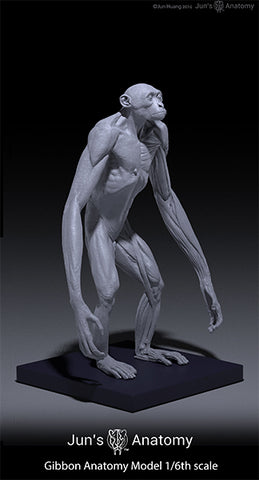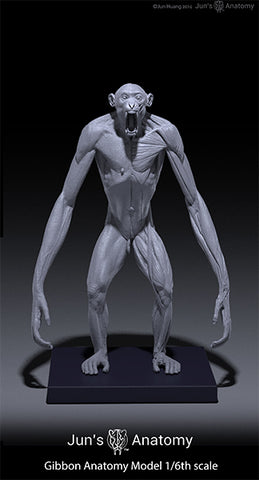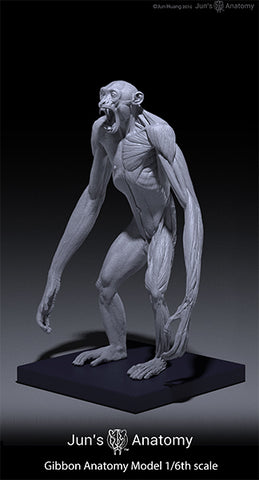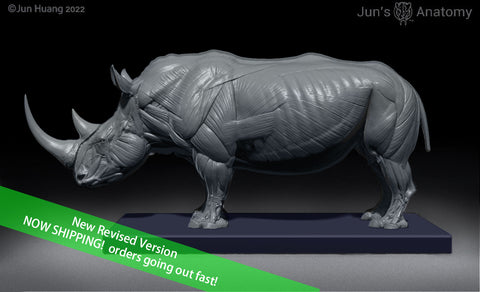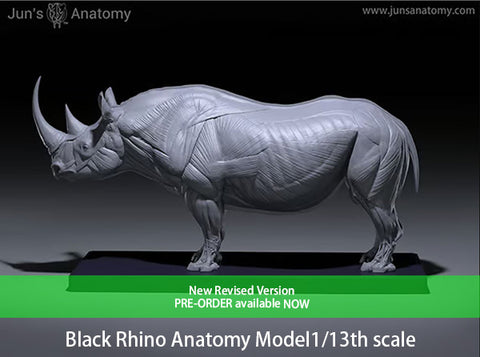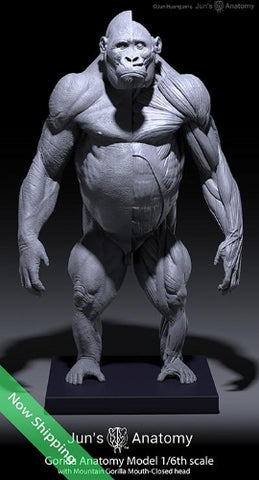Gibbon Anatomy Model 1/6th scale
$160.00
Shipping Notice* a number of my supporters encountered a problem when ordering multiple items(over 2 -3 items depending on the number of times/size/weight) due to the limited options in the shopping cart system, it cause the system to produce error message saying " your order cannot be shipping to the selected address..." when this happens please make separate orders, this will ensure accurate shipping calculations to carry through without causing an error. We will sort out and combine shipping if its available to the destination provided. Sorry for the inconvenience!
Due to the ongoing changing shipping cost, service providers, my dropshipper will find the most economical option and any excess funds will be refunded.
The Gibbon model is made to 1/6th scale, representing the largest gibbon species the Siamang(Symphalangus syndactylus) reaching 4.9 ft in height, or treat the model as a 1/4th scale model representing the average size of around 3.2 ft. This desktop size model is approximately 9" tall, it shows superficial muscle on one side, surface anatomy on the other side. This gibbon écorché is one of seven models in the "Human & Great Apes anatomy écorché". This size of an anatomy tool is perfect as a desktop reference of as an animal anatomy for the artist; the size is design for ease of handling, for teaching, or study.
Note* mouth-open "roar" head and plinth sold separately.
colors: neutral grey approximate size: 9" x 4" x 5" (including the base)
Gibbons are apes in the family Hylobatidae. The family historically contained one genus, but now is split into four genera and 18 species. Gibbons occur in tropical and subtropical rain forests from eastern Bangladesh through India to southern China and south east Asia and island countries. Also called the smaller apes or lesser apes, gibbons differ from great apes (chimpanzees, bonobos, gorillas, orangutans, and humans) in being smaller, exhibiting low sexual dimorphism, and not making nests. In certain anatomical details, they superficially more closely resemble monkeys than great apes do, but like all apes, gibbons are tailess. Unlike most of the great apes, gibbons frequently form long-term pair bonds.
One unique aspect of a gibbon's anatomy is the wrist, which functions something like a ball and socket joint, allowing for biaxial movement. This greatly reduces the amount of energy needed in the upper arm and torso, while also reducing stress on the shoulder joint. Gibbons also have long hands and feet, with a deep cleft between the first and second digits of their hands. Their fur is usually black, gray, or brownish, often with white markings on hands, feet, and face. Some species have an enlarged throat sac, which inflates and serves as a resonating chamber when the animals call. This structure can become quite large in some species, sometimes equaling the size of the animal's head. Their voices are much more powerful than that of any human singer, although they are at best half a man's height.

